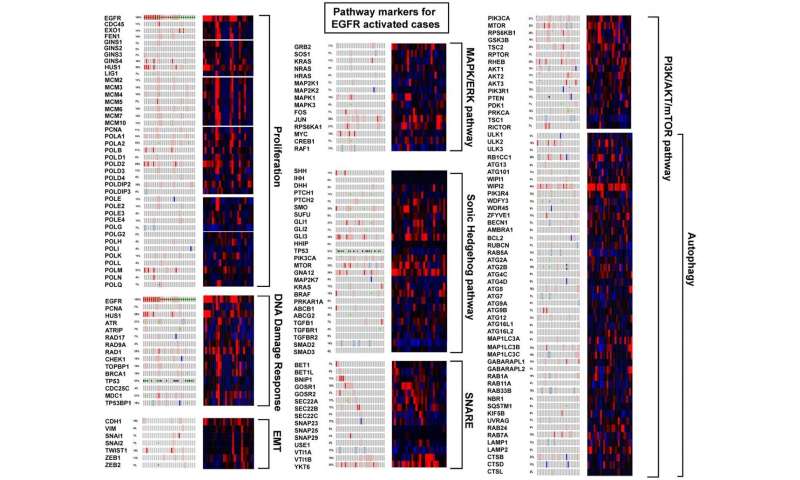
A recent study published in Oncotarget found molecular subtypes based on copy number, DNA methylation, and mRNA expression had variable proliferation levels, the highest correlating with decreased survival.
Significantly, results suggest EGFR over expression and activation are early alterations that likely stall the replication complex through PCNA phosphorylation creating replication stress responsible for DNA damage response and further mutation, but does not promote increased proliferation itself.
Dr. Melanie Haas Kucherlapati from the Department of Genetics at Harvard Medical School in Boston, Massachusetts, USA as well as the Department of Medicine, Division of Genetics at Brigham and Women’s Hospital in Boston, Massachusetts, USA said, “It is well established that cancer is the result of accumulated genetic changes to tumor suppressor genes or oncogenes, and that these changes lead to uncontrolled cellular proliferation.”
This study focuses on genomic and transcriptional changes to proliferation genes across a LUAD cohort created by The Cancer Genome Atlas, previously subtyped by them on the basis of copy number, DNA methylation, and mRNA expression.
The initial part of this study finds that subtype 2, 3, and 6 cases have highest expression of replication components and subtypes 1, 4, and 5 lowest; subtypes with highest expression have decreased survival.
The second part of this study unexpectedly found that levels of EGFR expression overall were inversely proportional to the expression levels of multiple other important proliferation factors across the TCGA LUAD cohort.
Among the group CLPTM1L, PBXIP1, and URGCP like EGFR while showing increased expression over the EGFR cohort, inversely correlated with the expression of multiple key replication proteins over total LUAD. YKT6, KLHL7, FAM220A, and VOPP1 also had increased expression over the EGFR cohort but directly correlated with high expression of multiple proliferation genes.
Source: Read Full Article
